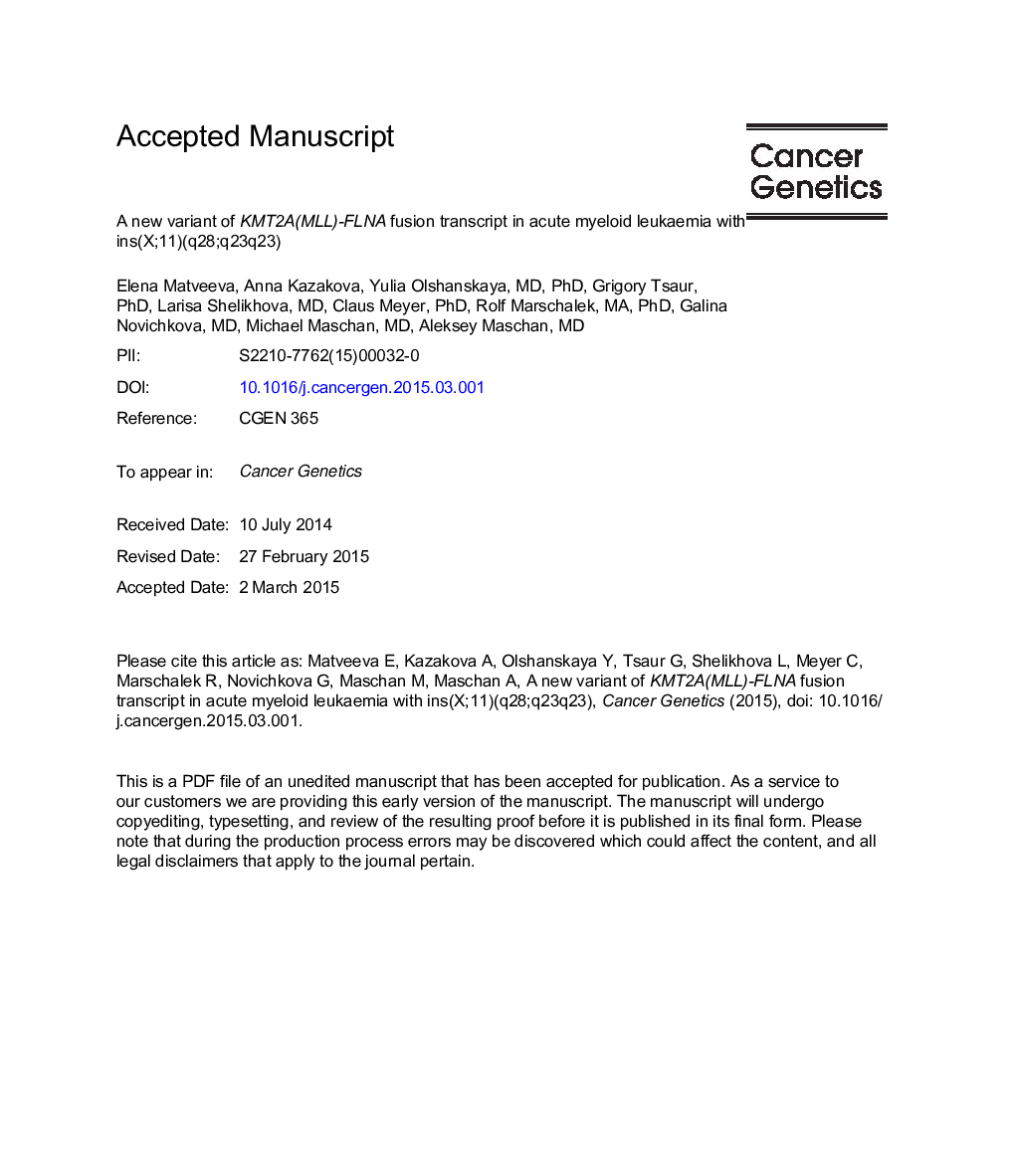| Article ID | Journal | Published Year | Pages | File Type |
|---|---|---|---|---|
| 10897673 | Cancer Genetics | 2015 | 13 Pages |
Abstract
The KMT2A gene (previously known as MLL) located at 11q23 is often involved in recurrent chromosomal translocations that lead to the development of acute leukemia, particularly in infants. Acute leukemias with KMT2A rearrangements have different prognoses, which depend on the partner gene involved in the translocation. The detection of all possible types of KMT2A gene rearrangements is of key importance for the identification of biological subgroups, which may differ in clinical outcome. In this report, we describe a case study of a 7-month-old boy who presented with AML-M4; however, no obvious 11q23 rearrangement was detected in the analyzed karyotype. Fluorescence in situ hybridization evaluation showed a nonstandard signal distribution in blast cells, corresponding to the presence of two KMT2A copies and one additional copy of 5â²-KMT2A inserted into the long arm of the X chromosome (ins(X;11)(q28;q23q23)). Subsequent molecular analysis showed a novel variant form of the previously described KMT2A-FLNA fusion gene, in which the KMT2A intron 9 is fused to the FLNA exon 16.
Related Topics
Life Sciences
Biochemistry, Genetics and Molecular Biology
Cancer Research
Authors
Elena Matveeva, Anna Kazakova, Yulia Olshanskaya, Grigory Tsaur, Larisa Shelikhova, Claus Meyer, Rolf Marschalek, Galina Novichkova, Michael Maschan, Aleksey Maschan,
